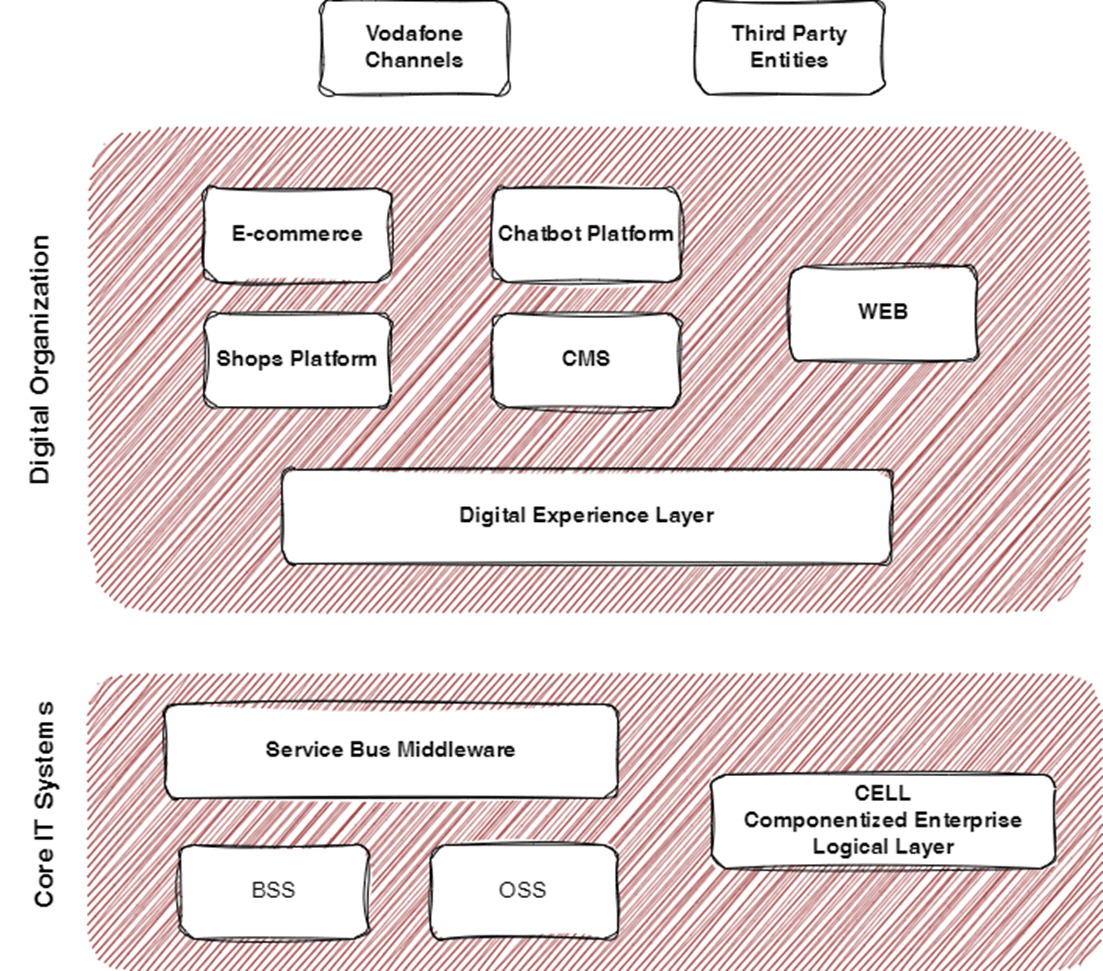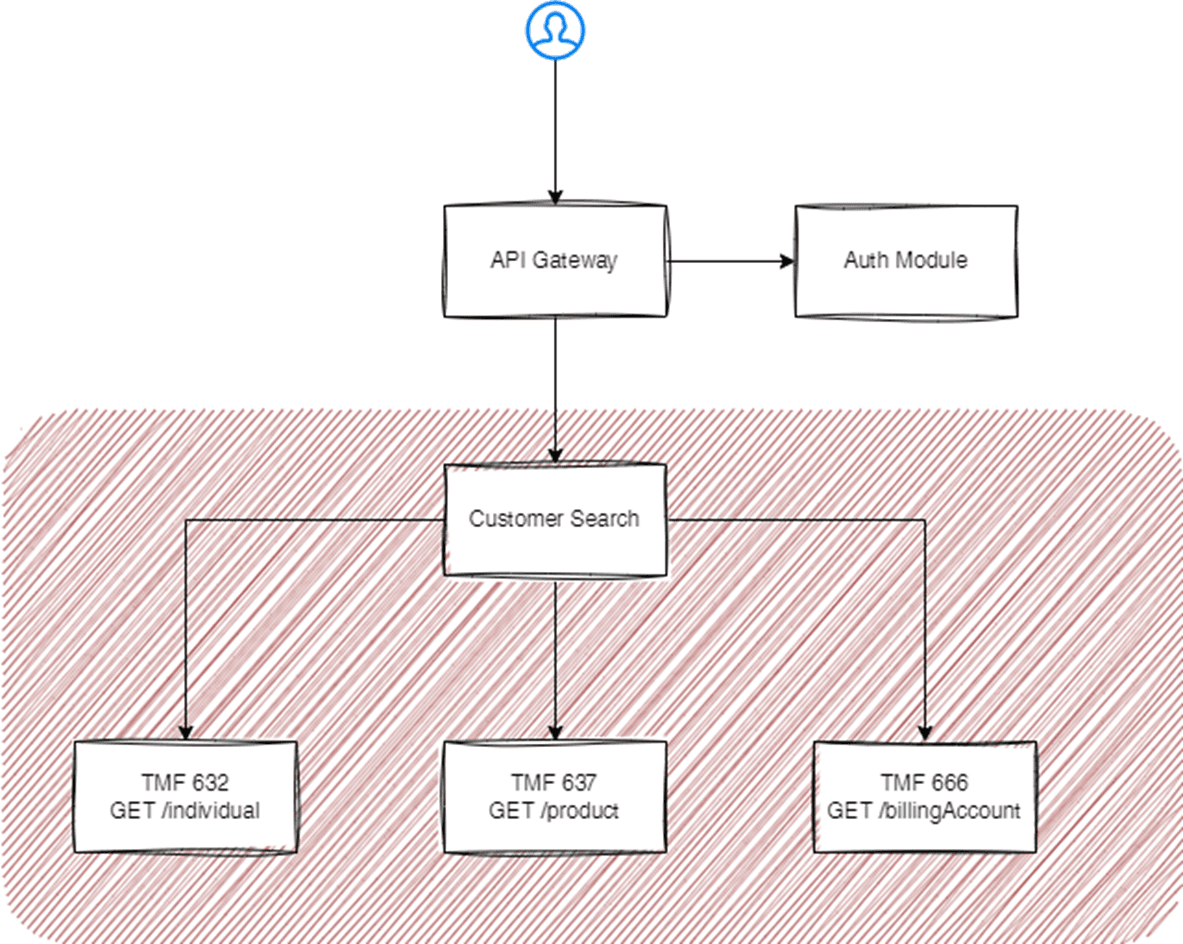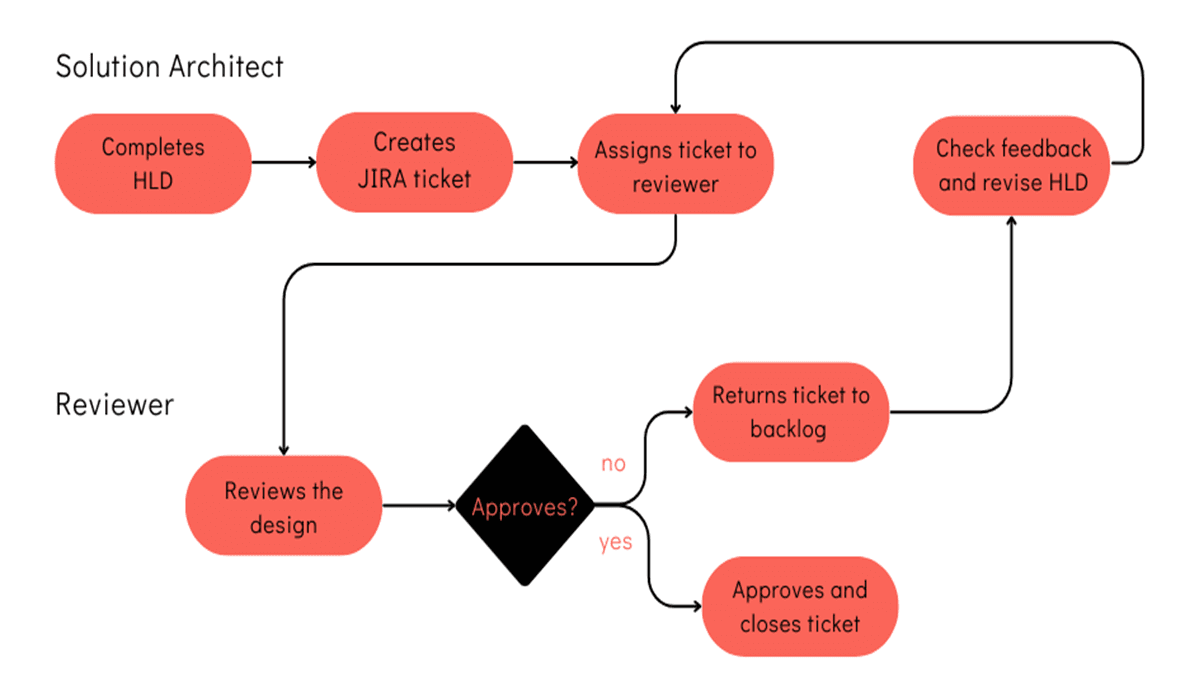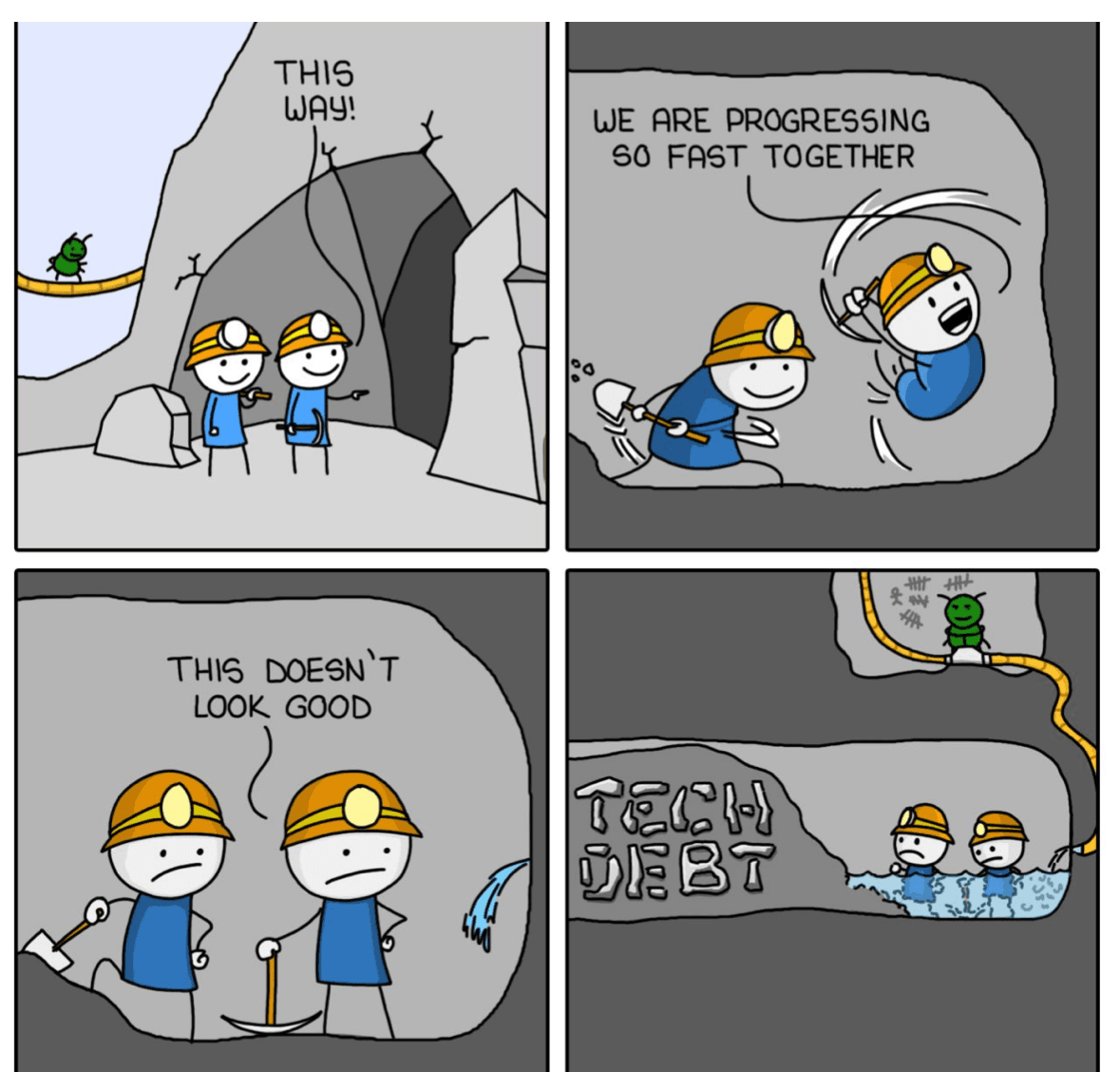API Governance : Part of Solution Architecture in Vodafone
There have been few weeks since we hosted the API Athens #B3 MeetUp in Vodafone Greece premises. We're excited to have shared how we manage APIs within Digital Engineering at Vodafone. Now, let's dive deeper into how we operate internally and explore why having a solid API Governance model is essential for our success. This governance framework is not just about maintaining order it ensures security, scalability and consistency across our API ecosystem, enabling us to deliver efficient, high-quality services at scale.

In today’s digital era, APIs (Application Programming Interfaces) have become the backbone of modern software development, enabling seamless integration and communication between different systems and applications.
However, as the number of APIs within an organization grows, so does the complexity of managing them effectively. This is where API governance comes into play where we tried to showcase how we are trying to implement API Governance concepts within Vodafone . API governance refers to the comprehensive set of standards, policies, and practices that guide the development, deployment and usage of APIs. By implementing robust API governance, organizations can ensure security, consistency, efficiency across their API ecosystem, ultimately driving innovation and enhancing the overall developer experience.
Company Structure and API-First Approach
Vodafone’s digital division comprises over 250 APIs, with around 110 exposed to the internet. Our team includes approximately 100 developers and QA engineers, supported by 16 solution architects. This structure needs us to maintain a robust API governance framework that aligns with our business capabilities and process frameworks.
We adopt an API-first approach, ensuring that APIs are at the core of our solution architecture. This approach facilitates better integration, reduces redundancy, and enhances reusability. By standardizing our APIs, we achieve greater business agility, faster development times, and improved interoperability. You can see in more details the necessity it plays to the whole ecosystem.

Why the API-First Approach is Essential
1. Separation of Concerns
One of the greatest benefits of API-First is the clear separation between the frontend and backend of a system. By developing the API first, frontend teams can build applications independently from the backend, focusing on user experience without waiting for backend services to be completed.
This separation of concerns allows different teams to work concurrently, accelerating the overall development process and fostering smoother collaboration. To further streamline this we introduced the mocking server concept. This has proven incredibly beneficial as it enables teams whether frontend, backend, or quality engineering to begin their work as soon as the API design and architectural documentation are provided by the Solution Architect. By minimizing dependencies between teams we can progress more efficiently and ensure that development continues seamlessly until all components are fully integrated.
2. Consistency Across Platforms
An API-First strategy ensures consistency across different platforms and channels. Whether you're developing a web app, mobile app, chatbot, an e-commerce platform or even integrating with IoT devices APIs act as a single source of truth. All platforms interact with the same backend services, ensuring that behavior remains consistent across devices.
This unified approach reduces inconsistencies, improves user experience, and makes maintenance easier by having a standardized communication protocol. On top it helps engineers to have the same specifications across so they can work on multiple things if is needed. The Solution Architect must be fully engaged which integration strategies and APIs.
3. Faster Time-to-Market
API-First encourages parallel development. While back-end developers focus on creating APIs, front-end developers can simultaneously build interfaces by mocking or simulating API responses. This approach accelerates the development process and reduces downtime helping businesses deliver products to market faster.
When changes are required APIs provide stability. If your backend services evolve the API layer can act as a buffer so front-end teams don't need to adjust their code unless there’s a major change.
From the customer’s perspective the demand for new features is constant but it's equally important to ensure those features are stable and reliable. To meet these needs while minimizing disruption modern deployment strategies like canary releases and rolling deployments are invaluable. These methods allow us to introduce updates gradually ensuring that only a subset of users are affected initially which helps identify and fix issues early. Because each component of the system operates independently we can deliver updates faster and with more control over the technical impact. This approach enhances time-to-market without compromising the stability customers rely on striking the perfect balance between innovation and reliability.
4. Improved Collaboration Across Teams
By defining APIs upfront, you create a clear contract between different teams ensuring everyone is aligned on how the system components will communicate. Tools like OpenAPI/Swagger enable teams to define, visualize and discuss API behavior before any code is written. We are using an internal custom Developer Portal to search and a have a clear view of the APIs and their specifications.
Product managers, UX/UI designers and other non-technical stakeholders can also contribute to the process providing feedback on the API’s functionality early in the development cycle.
5. Reusability Across Projects
One of the long-term benefits of API-First is reusability and omnichannel approach. APIs designed for one project can often be reused in future projects making development faster and more efficient. This approach is particularly useful in organizations with microservices architectures where APIs are shared across multiple applications.
This reusability reduces duplicated effort, simplifies system maintenance and helps create a more modular, efficient system.
6. Better Security
By centralizing communication through APIs you can enforce security best practices such as authentication, authorization and rate limiting at a single layer. Well-designed APIs make it easier to secure your system and monitor potential threats. APIs act as the gatekeepers to your system allowing you to maintain a robust security posture and manage external access with precision. We have specific authentication and authorization mechanisms that should be used in every High Level Design we are creating, to guarantee customers information is as secure as possible in conformance with company's high standards.
As businesses evolve the API-First approach ensures that your architecture remains agile, scalable and future-proof. By placing APIs at the core of your development process you not only accelerate time-to-market but also enhance collaboration, improve developer experience and set your system up for long-term success.
Whether you're building a new application transitioning to microservices or preparing for the next wave of connected devices, an API-First strategy will keep you ahead of the curve no matter how challenging it may seem.
API Standardization and Harmonization
API standardization and harmonization are crucial for ensuring all the above within a company. By establishing standardized API practices you ensure that all components whether internal or external communicate in a uniform way. This consistency simplifies development as teams don’t need to deal with fragmented or incompatible APIs. Harmonizing APIs across different platforms, environments and teams also facilitates smoother integrations and reduces the risk of errors or security vulnerabilities which is needed in our case since we have a lot common functionalities across different countries of the Vodafone Group. It enables teams to work more efficiently helps maintain high-quality user experiences and allows for easier maintenance and scalability as the system evolves. In essence API standardization and harmonization lay the foundation for a robust, cohesive and future-proof architecture.
We leverage the TMF Open Digital Architecture (ODA) to standardize our APIs utilizing this open-source framework designed specifically for telecom companies. The TMF ODA provides a set of standardized common APIs that help us align with industry best practices and streamline integration. Currently we operate with a mix of 70% open APIs and 30% custom, locally-developed APIs. This approach not only boosts interoperability across systems but also reduces redundancy increases reusability and ensures faster development cycles. By adhering to these standards we gain greater business agility and accelerate our time-to-market for new features ultimately driving innovation and enhancing our ability to respond to market demands.
What is TMF Open Digital Architecture (ODA)?
The TMF ODA is an industry-wide framework developed by the TeleManagement Forum (TMF), a global association of telecom service providers and technology vendors. It defines a modular, open and flexible architecture for the digital transformation of telecoms. The ODA offers a set of standardized APIs and best practices designed to simplify the integration of various technologies and platforms within telecom environments.
Key features of TMF ODA include:
- Open Standards: It promotes the use of open APIs to ensure that various software systems both internally and across the industry can integrate seamlessly.
- Interoperability: By using TMF ODA standards, telecom operators and vendors can ensure that their systems work well together whether they're using different vendors and software
- Modularity: TMF ODA promotes a modular approach to digital transformation allowing organizations to adopt technologies at their own pace and scale incrementally.
- Industry Alignment: It is designed specifically for the telecom industry aligning with key industry needs such as 5G, cloud-native operations and digital service delivery.
Real-World Example

Customer Search API
One of our most critical APIs is the Customer Search API used by Vodafone Shop Agents to access comprehensive customer data. This API enables agents to quickly retrieve customer billing information, personal details and product history. Supporting multiple search methods the API handles complex business logic to deliver accurate real-time results. By standardizing this API we’ve significantly enhanced the efficiency and accuracy of customer service operations ensuring a consistent and reliable experience for both agents and customers. This standardization also simplifies maintenance and improves scalability as our services grow.
In this example we aggregate three microservices into a single unified service. To maximize reusability these core APIs are leveraged across multiple use cases integrating with other aggregation APIs and third-party systems. This approach allows us to manage changes in a centralized manner ensuring that updates are made in one place and deployed across the entire system minimizing disruption. The uniformity of this strategy provides significant benefits particularly in terms of maintenance and deployment. When a change is made it’s deployed once and everyone benefits from the update simultaneously. Versioning plays a critical role here as it provides guardrails to ensure that changes remain backward compatible preventing any breaking changes and ensuring smooth transitions across versions.
Challenges in API Governance: What You Need to Know
In today’s digital landscape APIs are the backbone of many modern applications. They enable communication between services allow for scalability and make it possible to integrate with third-party solutions. However managing APIs at scale especially in organizations with multiple teams and systems requires robust API governance. While the benefits of API governance are clear the process is not without its challenges.
Some of the key challenges faced when implementing and managing API governance and how teams can navigate these complexities that we are going through can be seen below.
1. Documentation: Keeping It Comprehensive and Up-to-Date
One of the biggest challenges in API governance is maintaining accurate and comprehensive documentation. APIs are constantly evolving with new versions being released, endpoints updated or features deprecated. Ensuring that your documentation is up-to-date and reflects the latest changes is crucial as poorly documented APIs can lead to confusion and errors for developers both internal and external.
Why is this difficult?
- Frequent changes: APIs often change as new features are added or systems evolve. Keeping the documentation updated in real-time requires discipline and the right tools.
- Inconsistent documentation practices: Different teams might have varying standards for documenting APIs leading to inconsistencies that make it harder for developers to understand and use the APIs.
How to tackle it:
- Implement a documentation-first approach where API documentation is treated as part of the development process not an afterthought. Tools like Swagger and Postman can help automatically generate API documentation and make updates more manageable. We have also introduced Review Process as shown in the image for our Architecture High level designs. In case you need more info you can check also the recording of the meetup.
Establish clear documentation guidelines and best practices across teams to ensure consistency. To achieve this we have some basic guidelines and design policies for creating our architecture documents and API Designs that help all the Solution Architects have a common language. In accordance to those guidelines and the architecture principles we have the Reviewer checking in the process to see for potentials gaps.

2. API Deprecation: Managing the Lifecycle of APIs
As APIs evolve some endpoints or versions become obsolete, and managing this deprecation process is a common challenge in API governance. Deprecating an API means notifying users that certain features or endpoints will be phased out giving them time to migrate to newer versions.
Why is this difficult?
- Lack of communication: If deprecation notices aren’t communicated effectively users can be caught off-guard leading to broken applications or services.
- Backward compatibility: Maintaining backward compatibility while deprecating old APIs is complex. You need to support older versions for a time while pushing users to migrate to newer versions.
- Legacy systems: Some organizations rely on legacy systems that are slow to adapt to changes complicating the deprecation process.
How to tackle it:
- Implement a clear API versioning strategy to manage different versions of the API in parallel ensuring that users have sufficient time to migrate to newer versions.
- Communicate deprecation timelines effectively, using developer portals, mailing lists or dashboards to notify users well in advance.
- Provide migration guides and support to help developers transition smoothly from deprecated APIs to newer ones.
3. Tech Debt: Managing debt both for APIs and Solution Architecture
Technical debt is a pervasive challenge in solution architecture particularly when systems grow quickly or evolve without consistent planning and discipline. While taking shortcuts or prioritizing speed in development can yield short-term gains over time, this can lead to inefficiencies, increased maintenance costs and long-term scalability challenges. Addressing technical debt is critical for ensuring that your system remains robust, maintainable and adaptable to future needs. Managing technical debt is crucial for ensuring long-term API stability and performance.

Why is this difficult?
- Inconsistent Design Patterns: When different teams use varying approaches, frameworks or methodologies the architecture becomes fragmented. This inconsistency can make it harder to integrate new systems, troubleshoot issues or scale components effectively.
- Lack of Documentation and Knowledge Gaps: As the architecture evolves documentation often becomes outdated or neglected. When the system is poorly documented it becomes difficult for new team members to understand and work with the architecture and for teams to effectively maintain it. APIs are really difficult to be checked and makes developers life hard to work with them.
- Quick Fixes Over Long-Term Solutions: Often developers may implement short-term solutions to meet deadlines or business demands resulting in "quick fixes" that don’t consider future scalability or maintainability. This leads to more complex systems down the line.
How to tackle it:
- Standardize Design Principles: Establish and enforce architectural standards such as design patterns, modularity and consistent naming conventions to ensure that all parts of the system align and are easier to maintain and scale.
- Implement a Debt Management Strategy: Treat technical debt like a budget allocating time and resources to gradually pay it off. Regularly review and assess the debt and create a roadmap for addressing it in a manageable way.
API and Architectural governance is essential for scaling your API ecosystem ensuring security and maintaining consistency across platforms. However it comes with its share of challenges whether it’s keeping documentation current managing the lifecycle of APIs ensuring seamless integration or balancing global and local needs.
By addressing these challenges with a structured approach teams can successfully implement strong API governance that improves developer experience, enhances security and supports organizational growth.
Ultimately effective API governance requires ongoing effort and collaboration across teams as well as the right tools and processes to manage the complexities of modern APIs.
Conclusion
API governance is a critical pillar in modern solution architecture and will gain more and more tractions since the amount of APIs is constantly increasing. By establishing an adaptive framework inside your company around API Governance it will provide great benefits in the long run as your architectural landscape starts to evolve and starts to become unmanageable. It has to be adjusted thought to the internal processes, people and structure an organization has so it does not hinders business value and time to market.
As systems grow more complex a robust API governance model becomes increasingly essential for sustaining long-term innovation and ensuring seamless integration across diverse environments. With the right approach to API governance organizations can unlock greater operational efficiency, enhance service delivery and stay ahead in a competitive market. We are trying to adapt to the new technology changes we have and adjust our processes to have better control of our architecture and API decisions with the least impact possible in order to safeguard both the technical solutions as Solution Architects but also the business needs that come at a rapid pace within Vodafone.